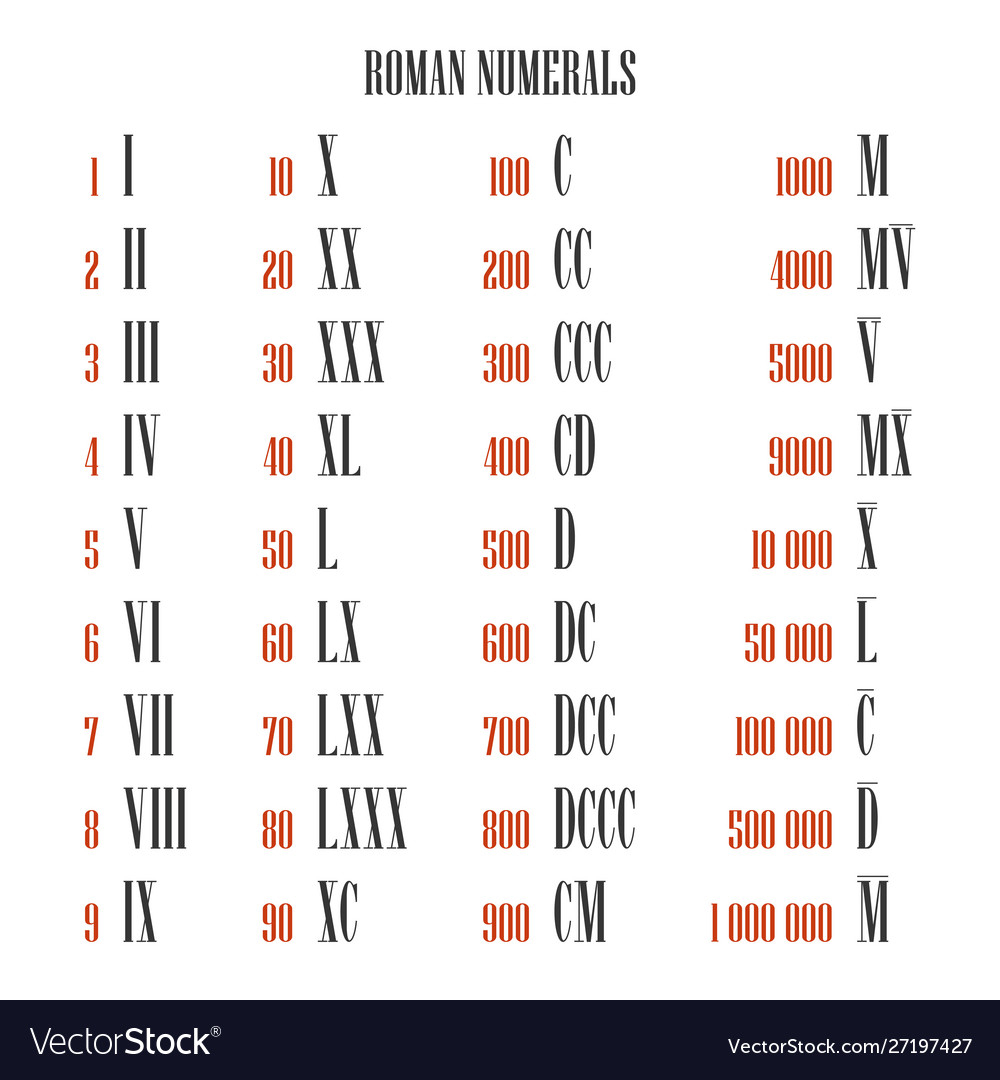XCX Roman numeral is a fascinating topic that delves into the ancient numeral system used by the Romans. This system has been instrumental in shaping the way we perceive numbers today. Understanding XCX Roman numeral not only provides insight into historical mathematics but also enhances our appreciation for the complexity of ancient systems.
The use of Roman numerals has persisted through centuries, appearing in various forms of art, architecture, and even modern-day contexts such as clocks, movie credits, and chapter numbering. XCX Roman numeral, although not a standard representation, can serve as a valuable learning tool for understanding the rules and intricacies of the Roman numeral system.
In this article, we will explore the concept of XCX Roman numeral, its historical significance, applications, and how it fits into the broader context of Roman numerals. Whether you're a student, educator, or simply curious about numbers, this article will provide comprehensive insights into the topic.
Read also:Doja Cat Leaked Exploring The Truth Behind The Controversy
Table of Contents
- History of Roman Numerals
- Basics of Roman Numerals
- What is XCX Roman Numeral?
- Rules for Constructing Roman Numerals
- Applications of Roman Numerals in Modern Times
- Mathematical Operations with Roman Numerals
- Common Errors in Roman Numeral Representation
- Roman Numeral Symbols and Their Values
- Converting Numbers to Roman Numerals
- The Future of Roman Numerals
- Subtopic: XCX in Historical Context
- Subtopic: XCX in Modern Usage
History of Roman Numerals
Roman numerals have a rich history that dates back to ancient Rome. They were developed as a system for counting and recording numbers, primarily used in commerce, engineering, and military applications. The origins of Roman numerals can be traced to the Etruscan numeral system, which influenced the Romans in their early development.
By the time of the Roman Empire, the numeral system had evolved into a standardized form that we recognize today. The Roman numeral system was widely used throughout Europe until the introduction of Arabic numerals in the Middle Ages. Despite this, Roman numerals continue to hold cultural significance and are still used in various contexts.
Basics of Roman Numerals
Roman numerals are represented by combinations of letters from the Latin alphabet. The basic symbols include I (1), V (5), X (10), L (50), C (100), D (500), and M (1000). These symbols can be combined to represent larger numbers according to specific rules.
For example, the number 4 is written as IV, and the number 9 is written as IX. This subtractive notation allows for more efficient representation of numbers and reduces the length of numeral strings.
What is XCX Roman Numeral?
XCX is not a standard Roman numeral, as it violates the rules of subtractive notation. In Roman numerals, a smaller numeral placed before a larger numeral indicates subtraction. For example, XC represents 90 (100 - 10), but adding another X after C creates an invalid sequence.
However, XCX can be used as a teaching tool to illustrate the importance of following rules in numeral construction. It serves as a reminder of the logical structure that underpins the Roman numeral system.
Read also:Tripie Bri Leaked Exploring The Controversy Impact And Facts
Rules for Constructing Roman Numerals
Constructing Roman numerals requires adherence to specific rules to ensure accuracy and consistency. Below are the key principles:
- Repetition Rule: A numeral can be repeated up to three times in succession (e.g., XXX = 30).
- Subtractive Rule: A smaller numeral placed before a larger numeral indicates subtraction (e.g., IV = 4).
- Limitation Rule: Only I, X, and C can be used as subtractive numerals.
- Order Rule: Numerals must be arranged in descending order from left to right.
By following these rules, you can accurately represent any number in the Roman numeral system.
Applications of Roman Numerals in Modern Times
Despite the widespread adoption of Arabic numerals, Roman numerals remain relevant in modern contexts. They are commonly used in:
- Clocks and watches
- Movie and book credits
- Chapter numbering in books
- Monuments and inscriptions
- Formal documents and legal texts
Their timeless elegance and historical significance make Roman numerals a popular choice for decorative and ceremonial purposes.
Mathematical Operations with Roman Numerals
Performing mathematical operations with Roman numerals can be challenging due to their non-positional nature. Addition and subtraction are relatively straightforward, but multiplication and division require careful manipulation of symbols. Below are examples of basic operations:
- Addition: XX + XX = XL
- Subtraction: L - X = XL
For more complex calculations, it is often easier to convert Roman numerals to Arabic numerals, perform the operation, and then convert back if necessary.
Common Errors in Roman Numeral Representation
Mistakes in Roman numeral representation often arise from misunderstandings of the rules. Common errors include:
- Improper use of subtractive notation (e.g., writing IC instead of XC)
- Excessive repetition of numerals (e.g., writing XXXX instead of XL)
- Incorrect order of numerals (e.g., writing XVC instead of XV)
Avoiding these errors requires a solid understanding of the rules and careful attention to detail.
Roman Numeral Symbols and Their Values
The following table summarizes the basic Roman numeral symbols and their corresponding values:
| Symbol | Value |
|---|---|
| I | 1 |
| V | 5 |
| X | 10 |
| L | 50 |
| C | 100 |
| D | 500 |
| M | 1000 |
These symbols form the foundation of the Roman numeral system and are essential for accurate representation.
Converting Numbers to Roman Numerals
Converting numbers to Roman numerals involves breaking down the number into its constituent parts and assigning the appropriate symbols. For example:
- 2023 = MMXXIII
- 1984 = MCMLXXXIV
Using a systematic approach and understanding the rules of Roman numerals ensures accurate conversions.
The Future of Roman Numerals
Although Roman numerals are no longer used for everyday calculations, they continue to hold cultural and historical significance. Their presence in art, architecture, and ceremonial contexts ensures their relevance in modern society. As technology advances, Roman numerals may find new applications in digital design and cryptography.
Efforts to preserve and promote the study of Roman numerals are essential for maintaining their legacy and ensuring future generations appreciate their importance.
Subtopic: XCX in Historical Context
In historical contexts, XCX would not have been recognized as a valid Roman numeral. The Romans adhered strictly to the rules of numeral construction, and any deviation would have been considered incorrect. However, studying such examples can provide valuable insights into the evolution of numeral systems and the importance of standardization.
Subtopic: XCX in Modern Usage
In modern times, XCX might appear in educational materials or as a playful representation in art and design. While it is not a valid numeral, its use can spark curiosity and encourage exploration of the Roman numeral system. This highlights the adaptability and versatility of Roman numerals in contemporary society.
Kesimpulan
Roman numerals, including the concept of XCX, offer a fascinating glimpse into the history and development of numeral systems. Understanding the rules, applications, and cultural significance of Roman numerals enhances our appreciation for their enduring legacy. Whether used in historical contexts or modern applications, Roman numerals remain a vital part of our numerical heritage.
We encourage you to explore further by practicing conversions, studying historical examples, and sharing your insights with others. Leave a comment below or explore other articles on our site to deepen your knowledge of mathematics and history.


